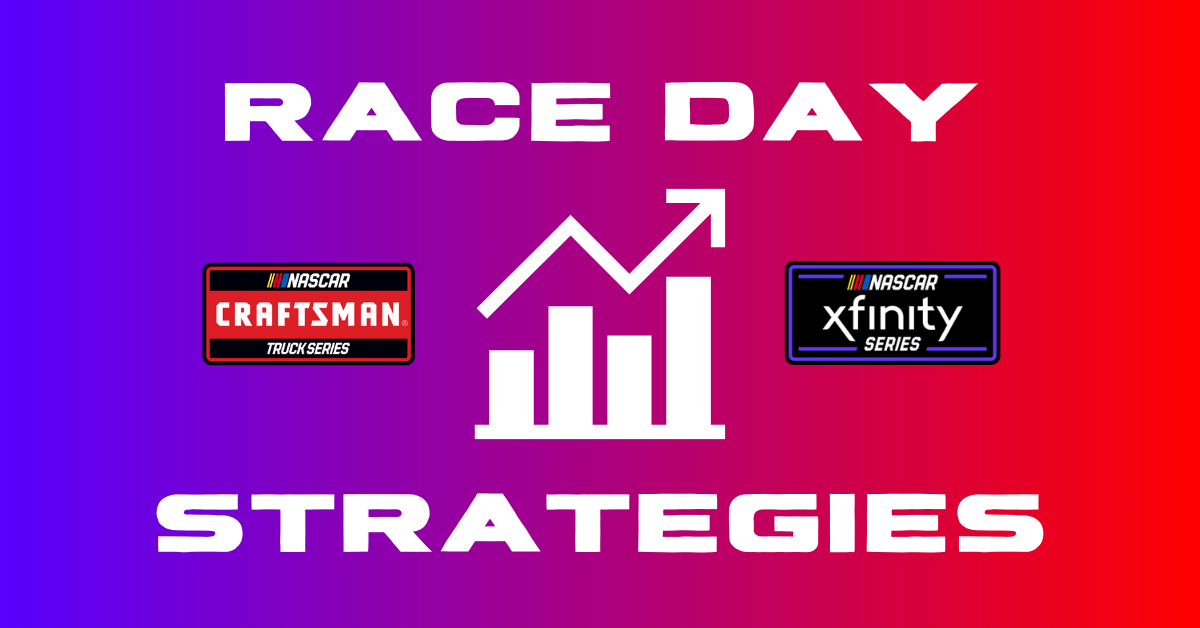WTR Fam! Welcome to another edition of Race Day Strategies, covering the Truck Series and Xfinity Series from a DFS strategy perspective. In this article, we will lay out past trends from previous relevant races, show the winning lineups for the flagship GPPs of those races, and give a high-level look at possible lineup construction based on this info and track type.
If you have not done so already, I would encourage you to read our NASCAR DFS Strategy Primer as this article will often piggyback on the strategies mentioned there. I will also say, as I mentioned in our primer, that these strategies are meant to be guardrails and not rules that are set in stone. Practice and Qualifying play a crucial role in dictating final strategy and builds. As this article is released mid-week, we encourage all members to check out our Discord for more discussions on strategy after the results of practice and qualifying are known.
Without further delay, let’s dive into Chicago!
Race Info and Trends

Available Dominator Points
22.5 pts – Fastest Laps
12.5 pts – Laps Led
Lap Leaders
2023 – 25
Fastest Laps
2023 – 9, 3, 1
Cautions – 3 – Avg. 3
DNFs – 2 – Avg. 2
Avg Green Flag Run – 5.3 Laps
PD+FP Pts per Driver in Winning Lineup – Avg. 42.67
2023 – 42.67
% of Laps Led per Race in Winning Lineup – Avg. 100%
2023 – 100% (25/25)
% of Fastest Laps per Race in Winning Lineup – Avg. 92.3%
2023 – 92.3% (12/13)

Winning Flagship GPP Lineups

Roster Construction Strategy
Dropping in with a little more of write-up than normal this week. Last year’s Xfinity Series race in streets of Chicago was halted after 25 laps when lightning was detected near the track. This hold never let up and resulted in the race being pushed to Sunday morning. Unfortunately, this was no better as rain descended on the city forcing the race to be deemed official even though they had not reached the halfway point. While some may throw out anything related to this race, I think we can still glean details that will help us this weekend.
We saw primarily single-file, spread-out racing last year and I don’t see why that should be any different this time around. The start/restart zone will be located just before the last corner again, which should give cars a chance to spread out before entering the first 90-degree turn at the end of the front straightaway. After that, there aren’t many passing opportunities on the track, other than out-braking someone into a turn, if you are close enough to make a lunge. Additionally, the Xfinity Series should only have one pit-stop to make, likely coming near the end of the 2nd stage. According to last year’s broadcast, the fuel window was around 30 laps. This year’s race has been shortened to 50 laps and the pit window should be open between laps 20 and 30 (end of the 2nd stage).
With all that in mind, I think we see this race play out in a straightforward fashion. Your fastest cars who qualify up front should stay there, sans any pit road mistakes or other issues such as a random mechanical failure. I do think faster cars and more experienced road/street course drivers can pick their way through the field. Outside of that though, I don’t see a ton of passing happening.
For overall roster construction, I view this as a typical road course race. We will value place differential over dominator points and try to target drivers who have the ability to finish well relative to their price. For cash, more so than ever, it will be completely qualifying-dependent. John Hunter Nemechek will be starting at the rear (passed tech but then had to change an engine after spotting an issue) but we don’t know if he will be scored from the rear based on whether or not he attempts to qualify. Any other drivers of his caliber or equipment would be a priority. It’s also not uncommon to play a driver in cash at a road course who we think could go out and dominate the race. I won’t shy away if the opportunity presents itself if we don’t have as many great place differential options.
For tournaments, I would say the roster construction would be close to the same. I would consider pivoting off of one of the chalky place differential drivers to a similarly priced driver who has the upside to finish high. Again, this is very qualifying-dependent.
That’s all for this edition of Raceday Strategies for the Xfinity Series! I hope this helps everyone with their mindset as we approach building lineups for the Xfinity Series race this weekend! One last time, these are high-level guardrails and not set-in-stone rules. We will have much more discussion in Discord as we lead up to lineup lock for these races. Not a member? Sign up today and get 50% off your first month or week of your Monthly or Weekly subscription! Good luck!

